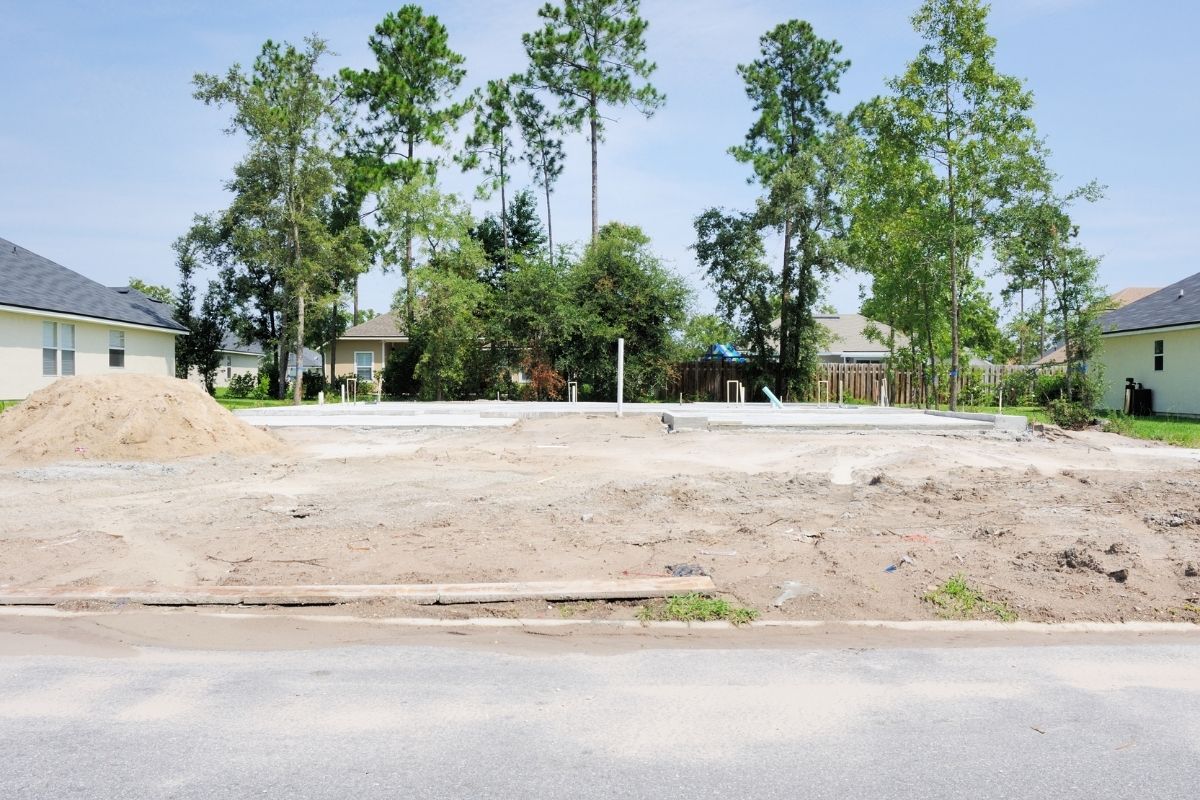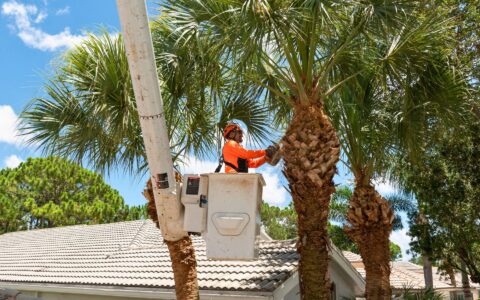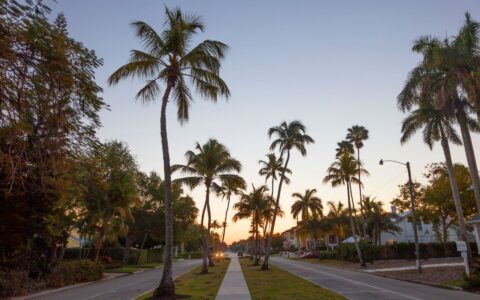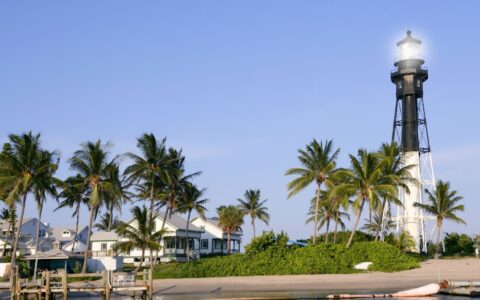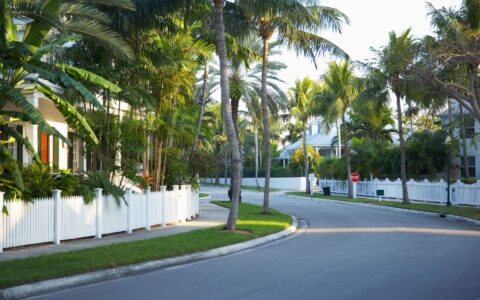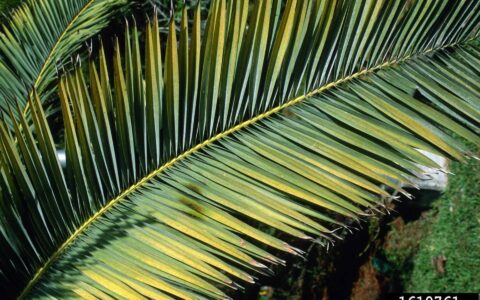As construction and landscaping projects in South Florida continue to surge, we’re seeing more trees being damaged and dying from construction activity. Without a tree protection plan in place before work begins (and closely following the plan throughout the project), it’s almost inevitable that valuable trees on your property will be killed by construction work. Given the many benefits of mature trees for South Florida residents and the beauty they bring to your home or property, it’s important to understand how major landscaping and construction projects can seriously harm nearby trees. When you understand the risks, you’re in a better position to avoid inadvertently destroying one of the most valuable resources on your property.
Construction Damage to Trees
Construction damage to trees is a common occurrence, whether the construction project is small or large. Homeowners may not be aware that even minor construction work or landscape projects can damage trees and tree roots, sometimes fatally.
Below are some typical construction projects that often damage (or kill) nearby trees.
Excavating or Trenching Soil
Tree roots are often damaged from digging, excavating, and trenching that’s done to install additions to homes, underground lines, and landscape features. For example, each of the common projects below can sever both stabilizing anchor roots and fine feeder roots:
- Concrete footings for buildings, extensions, decks, and other structures
- Swimming pools
- Utility and irrigation lines
- Garden ponds, streams, and other water features
- Walls and fences
- A new driveway, patio, or even a garden path
Excavating or trenching can go several feet deep, cutting everything within the excavated area. Even when it’s relatively shallow, such as for irrigation lines, digging will sever or disrupt roots from nearby trees.
While large, anchoring roots grow down and out into soil, most of a tree’s roots are close to the soil’s surface (within about 12 inches). That’s where you’ll find a tree’s fine “feeder” roots that take up water and nutrients to help support the tree. When enough of these roots are damaged, your tree cannot get enough moisture or nutrients to survive.
PRO TIP: Damage from even minor construction projects can have long-term consequences for tree health.
Grading or Levelling
Soil grading or levelling is often part of landscaping or construction projects. For example, grading will prevent standing water and ensures that all water drains away from buildings, walkways, and parking areas.
However, grading soil for construction projects will damage your trees, whether you’re adding soil or removing it.
Changing the depth of soil around a tree can harm it in two ways:
- Adding soil buries a tree’s root flare and smothers roots. A buried trunk flare encourages girdling roots, decay, and insect damage, as a tree’s bark can’t survive when it’s covered by soil or exposed to constant moisture. And covering a tree’s root zone with additional soil will decrease the amount of oxygen (and, sometimes, moisture) available to the tree.
- Removing soil will expose and sever roots. Delicate feeder roots will be exposed to air and heat, and extensive soil removal can damage so much of a tree’s root system that the tree won’t survive.
Both of these types of construction damage can be deadly to a tree.
Even tilling soil for a new lawn or new planting areas around existing trees can damage tree roots, as will adding new surface irrigation over established tree root systems.
While we think of trees as tough, long-lived survivors, when people make changes to a tree’s surroundings the results can be more serious than we expect.
Types of Tree Damage Caused by Construction
In addition to the damaged and severed tree roots that result from soil excavation, there are other ways that construction can damage or kill your trees. Damage can occur both above ground and underground.
Trunk and Branch Damage from Equipment
Damage to trees from construction vehicles and equipment is also known as “mechanical damage”. This type of damage occurs when trucks, cranes, backhoes, and other heavy equipment hit trees. Mechanical damage is often accidental, such as when crews maneuver large trucks or machinery into tight spaces or position them too close to existing trees.
Branches are naturally flexible but will break when hit by heavy equipment, leaving jagged ends, hanging branches, and unsightly stubs.
Bumpers, buckets, and cranes can gouge or scrape off bark. Tree bark is a waterproof, protective covering that prevents insects and diseases from getting inside trees. Any breach in the bark leaves trees vulnerable to infection and insect attacks.
Soil Compaction
Soil compaction is the most common type of construction damage, as it can happen even if you’re not excavating any soil. The weight of heavy equipment alone will compact soil, as will stored or staged construction materials.
Healthy soils aren’t solid; they’re made up of about 50% pore space that holds air and/or water. When soil is compacted, the total pore space is reduced. As a result, water and oxygen cannot move through the soil to the roots. Compacted soils are often so hard that roots cannot penetrate them. The end result is a tree with a poor root system that struggles to survive and is easily toppled by strong winds.
Soil Poisoning
Another common type of construction damage that can kill or damage your trees is dumping liquids that soak into the soil.
For example, damage from concrete happens when crews washout equipment (mixers, tubs, screeds, floats) used to install concrete. Concrete washout water is extremely alkaline and can change the pH of your soil so much that trees and plants can’t grow. There’s a narrow range of soil pH that supports healthy plant growth and it can be hard or impossible to return the soil to a healthy pH once it’s had waste dumped into it.
Other toxic materials, such as solvents and paint, or hydraulic fluid, oil, or fuel leaking or spilling from equipment will also damage long-term soil health.
Changes to a Tree’s Surroundings
Construction projects may include removing structures, fences, and trees, as well as installing new fences and building additions. Changes to the amount of sunlight, shade, wind, and water an existing tree receives can have devastating results.
Existing trees, especially large, mature trees, can’t change their growth habits and environmental preferences. Changing the environment can shock a tree, and the stress of permanent changes such as sunlight levels and soil moisture can kill a tree as it struggles to adapt.
How to Prevent Construction Damage to Your Trees
The best way to prevent construction damage is with a plan made before demolition or construction begins. An organized tree protection plan will ensure that the layout of vehicle routes, material storage, and debris staging areas will minimize disturbance to your valuable trees.
Preventing construction conflicts with trees isn’t difficult, but it takes an understanding of what trees need and what construction work requires. Before work begins, discuss with your contractor your concerns about tree damage and ask for a tree protection plan to be part of the project.
Making a Tree Protection Plan
Many cities have existing tree protection ordinances (such as this one for Miami) ARTICLE 8.1. – TREE PROTECTION | Ordinance 11000 (Previous Zoning Code) | Miami, FL | Municode Library so it’s important that your contractor is aware of, and follows existing ordinances.
Construction sites are busy, crowded, and have ever-changing environments, and there’s no guarantee that all crew members will hear spoken instructions or follow them.
The best way to help your trees is to install common tree protection methods before work begins. These should be left in place until the end of a project. These include:
- Temporary, high-visibility orange safety fencing around a tree’s dripline
- Laminated “keep out” signs attached to fencing
- A temporary, 6” layer of organic mulch spread over each tree’s dripline
- Locating staging areas for materials, equipment, or debris away from trees
- Protecting soil and roots from compaction with ½” thick plywood sheets or rigid construction mats, with a 6” layer of cushioning organic mulch beneath.
Remember that a handyman or non-licensed contractor should observe local codes and regulations. However, it’s your responsibility to ensure that your construction work is done by qualified, licensed professionals.
How to Help Trees Damaged by Construction
Sometimes a damaged tree is beyond salvaging and must be removed. But in many cases, a construction-damaged tree can be saved if the problems are fixed quickly. If you’ve recently had construction or landscaping work and think your trees may have been affected, call a Certified Arborist for an evaluation.
Depending on the type and extent of damage, an arborist may recommend:
- Pruning damaged branches to remove safety hazards, clean up wounds that make the tree vulnerable to insect or disease problems, and improve the tree’s shape,
- Air spading to alleviate compacted soil or uncover deeply buried roots,
- Deep root fertilization and/or watering to provide nutrients and moisture that will help the tree recover more easily,
- Installing temporary shade structures or coverings to help trees that are suddenly exposed to bright sunlight, or
- Preventive treatments to protect damaged trees from infections or infestation.
We’re Here to Help
If you’re planning any construction or a major landscaping project in the next few months, give us a call. Our Certified Arborists can identify any trees at risk and walk you through the steps needed to protect them during the work. We can also provide you and your contractor with a detailed tree protection plan
We’re also available to inspect any trees that may have been affected by recent construction work. It’s not always easy to identify the damage or pinpoint the reason why trees are declining. Our arborists can diagnose any issues affecting your trees and suggest a tree health management plan to bring them back to health.
Call Sherlock for quality tree services
Whether you're looking for specific tree care services, such as palm trimming, tree removal, or disease treatments, or would like one of our Arborists to examine your trees to identify any issues and recommend options, we're always here for you! Just give us a call at 954-788-4000 to set up an appointment.
SEE MORE ARTICLES
Looking for more?
We've got you covered with a monthly newsletter full of tips, resources, updates, how-to's, and other helpful information about trees and landscapes in South Florida!




